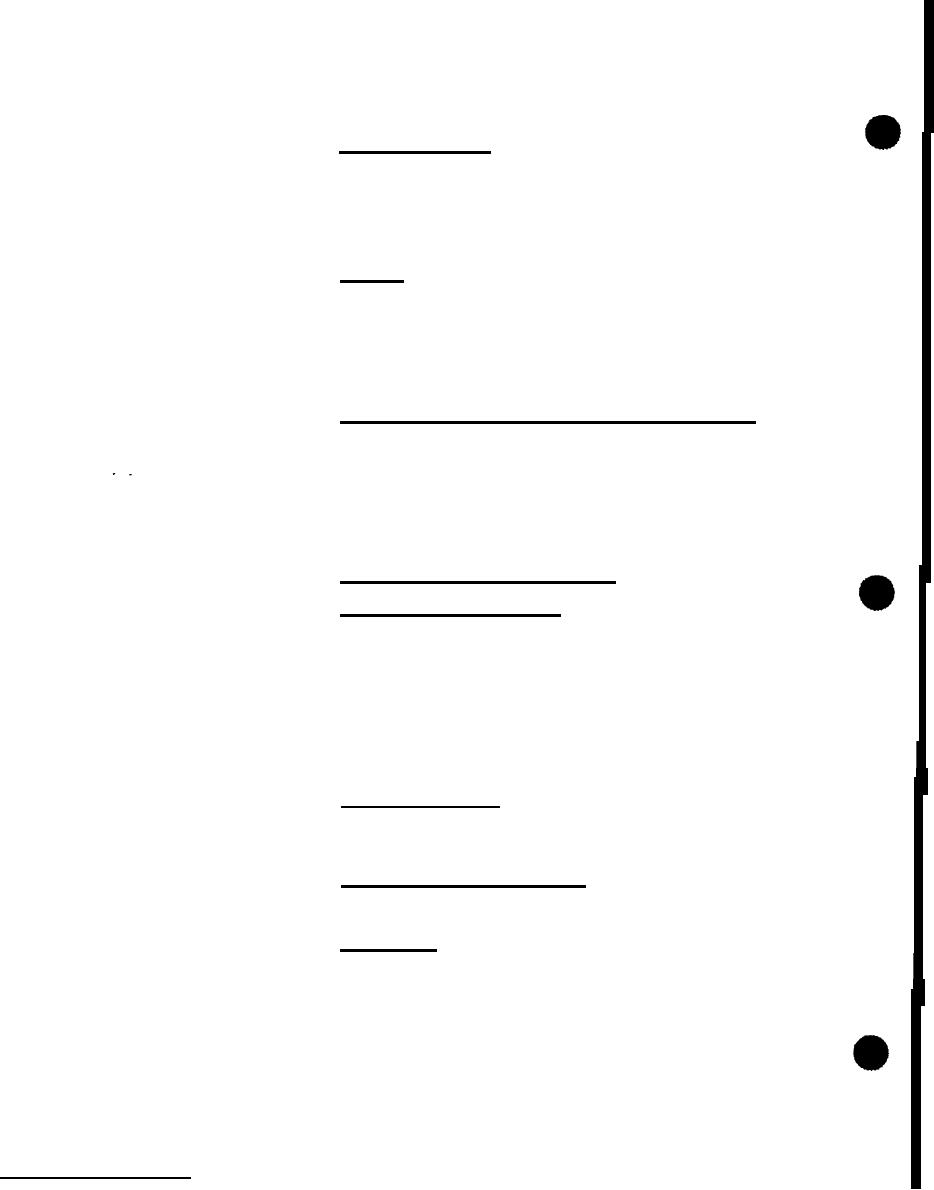 |
|||
|
Page Title:
Component installation requirements |
|
||
| ||||||||||
|
|  MIL-H-8891A
Standard components - Standard components shall be used
3.9.1
in Preference to nonstandard components wherever they will perform the func-
tion required by the system operating needs. Where no applicable AN or MS
standard component exists, a minimum size envelope compatible with the per-
formance, installation, inspection, and maintenance requirements shall be
used. Where non-standard components are used envelope drawings and speci-
fications shall be provided that are suitable for competitive procurement.
.
Orifices - Orifices larger than 0.012 inch but smaller
3.9.2
than 0.070 inch in diameter shall be Protected by adjacent filter elements
having screen openings 0.008 to 0.012-inch in diameter. Orifices smaller
than the above range shall be protected by adjacent elements having open-
ings smaller than the orifices and shall be subject to approval of the
procuring activity. Orifices and filter elements shall be strong enough
to withstand system design flow and pressure up to and including blocked
flow without rupture or permanent deformation.
Actuators essential to safe operation of the aircraft -
3*9.3
Where two or more independent hydraulic systems are utilized to power serv-
ices essential for safe flight (e.g., primary flight controls), the actua-
tion and control devices shall be designed and constructed (either parallel
or series configuration) so that no single structural or hydraulic failure
will cause loss of more than one hydraulic system or allow transfer of
fluid from one system to another. Aluminum shall not be used as a struc-
tural or fluid containment material for the actuation or control devices
in Navy vehicles.
Component installation requirements
3.10
Installation design practice - The hydraulic system
3.10.1
component installation requirements specified in the following subparagraphs
are considered to be representative of good design practice; however, it is
recognized that variations from these practices will, in many cases, be
necessary due to specific installation exigencies. All installation of
standard parts or components shall be designed to accommodate the worst
dimensional and operational conditions permitted in the applicable part or
component specification or AN or MS standard. All components shall be in-
stalled and mounted to satisfactorily withstand all expected acceleration
loads, wrench loads, vibration effects, etc. All components shall be in-
stalled in a manner to prevent their use as handiest steps, etc.
Reverse installation - All system components shall be
3.1O.1.1
designed so that reverse installation cannot occur. Nonstandard components
may be used, if necessary, to conform to these requirements.
Pilot's cockpit and compartment - No component contain-
*
3.10.1.2
ing hydraulic fluid shall be mounted in the pilot's cockpit or crew compart-
ment without approval of the procuring activity.
3.10.2
Accumulators - If practicable, accumulators shall be in-
stalled in areas of controlled temperature environment. Consideration shall
be given to installations which will provide protection for crew members,
passengers and adjacent vehicle subsystems against accumulator rupture. Ac-
cumulators shall be charged with an inert gas only. Installation with the
gas side down should be considered in order to permit easier checking for oil
leakage past the piston and removal of oil or water from the gas side.
20
|
|
Privacy Statement - Press Release - Copyright Information. - Contact Us |